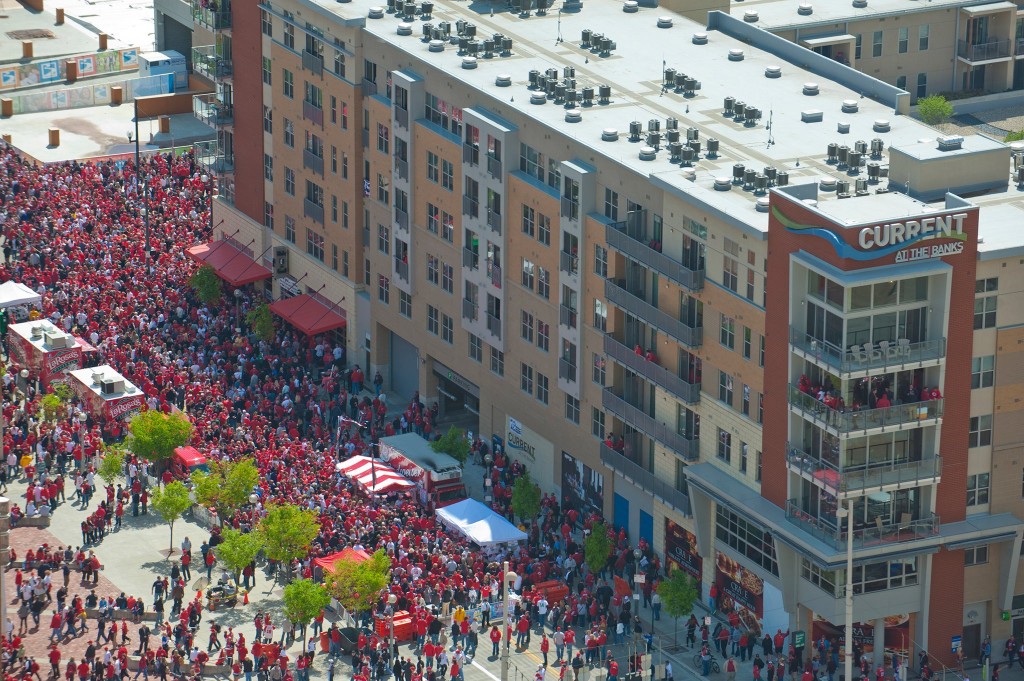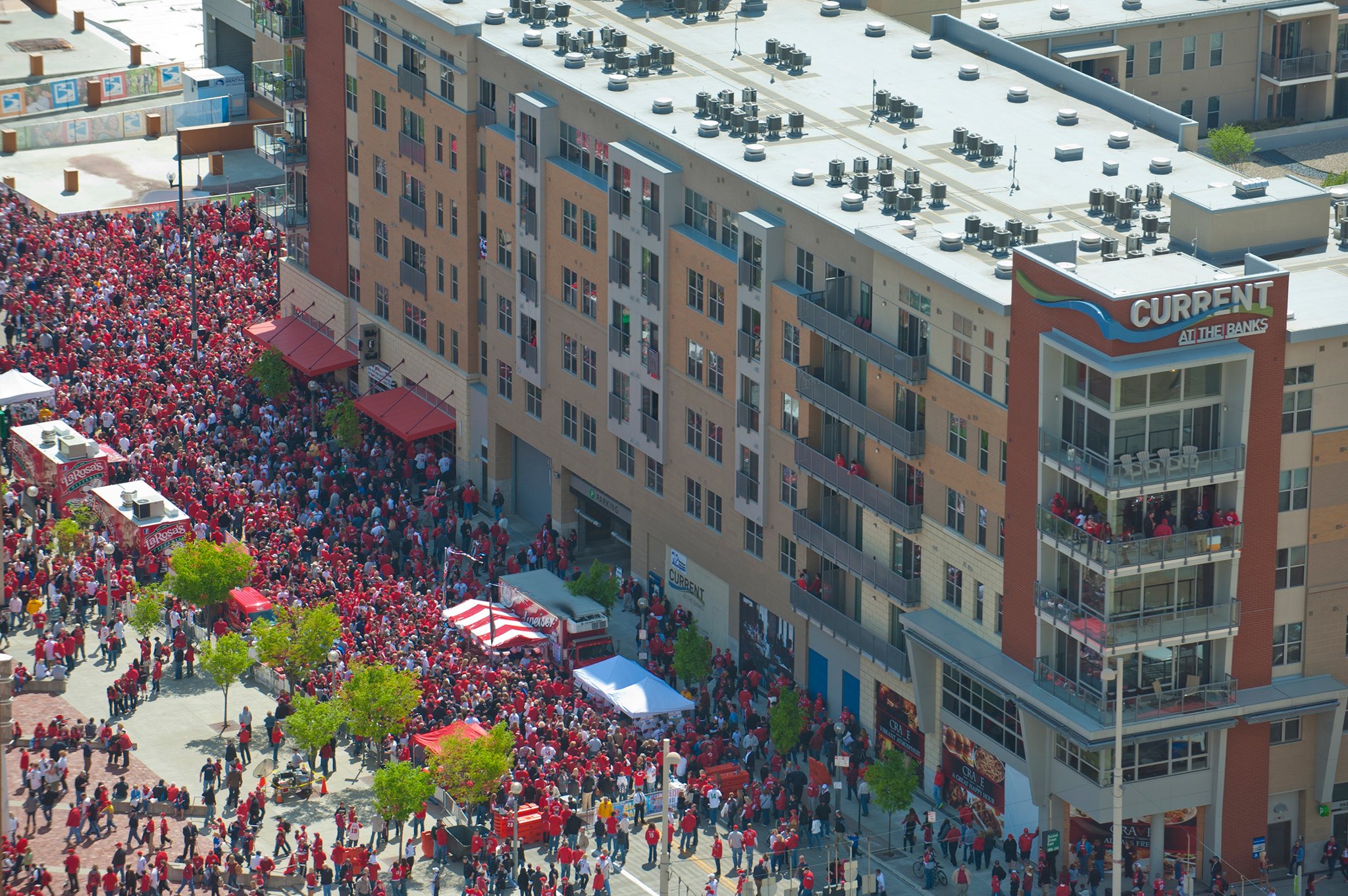Cincinnati is a city that lacks significant amounts of either in- or out-migration. This results in a relatively stable population base, and relatively predictable social trends. What it also means is that people often linger on the “good” or “bad” times they remember most.
The Cincinnati of today is one notably different from the Cincinnati of the past 20 years, however, many Baby Boomers reminisce about the golden years of downtown – that is the time when new office towers were being constructed and both the Reds and Bengals were winning.
Between 1970 and 1990, downtown saw the construction of 29 new buildings with at least ten floors. During the same time, the Reds won three World Series championships and the Bengals went to two Super Bowls. One could argue that these were the most recent boom times in Cincinnati history and, as a result, those that experienced the time period first-hand have written a narrative that it was a high point followed by precipitous decline.

2012 Reds Opening Day outside of Great American Ball Park. Photograph courtesy of The Banks.
This narrative was mostly true until the past half-decade. Cincinnati’s 21st century got off to a tumultuous start, but has otherwise been defined by success throughout the urban core. New hotels, office towers, residential midrises, nightlife, and shops have sprung up all throughout the Central Business District, and Over-the-Rhine is in the midst of one of the most dramatic urban transformations in American history.
At the same time, non-urban enthusiasts have been reinvigorated by the success of the Reds and Bengals on the field which has been now joined by the emergence of the University of Cincinnati as a major division one athletics program.
The combination of these two seemingly non-connected movements was perhaps most evident on Reds Opening Day this past Thursday. It was estimated that the largest crowd in history – 100,000 – gathered for the93-year-old Findlay Market Opening Day Parade. Many of those baseball revelers then conveyed at The Banks for what turned into a massive block party outside Great American Ball Park where a record crowd gathered to watch the Reds beat the Marlins on day one of the 2012 season.
Several new office towers, residential midrises and hotels are scheduled to be built in the coming years. This is in addition to the ongoing work on the Cincinnati Streetcar, Horseshoe Casino, Smale Riverfront Park, 21c Museum Hotel, and continued transformations in historic Over-the-Rhine.
All of this bodes well for continued success throughout the rest of the decade. And while it may still be early, Cincinnati’s Gen Xers and Millennials may eventually look back on the time between 2005 and 2025 as the golden years for their generation in the Queen City. The Baby Boomers established Cincinnati’s center city as an economic powerhouse regionally, and it appears that their children are positioning Cincinnati to be a diverse, resilient city for generations to come.
The city’s back. Back the city.
